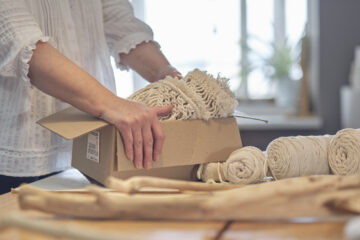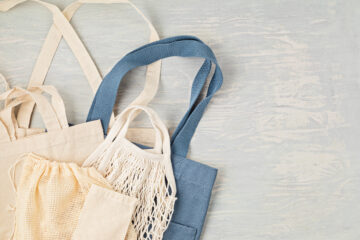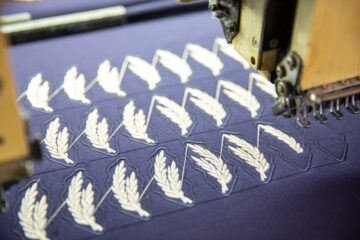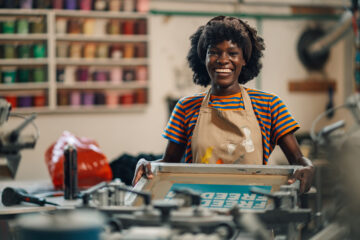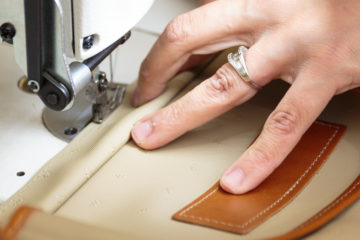Mixing Materials in Furniture Design: Blending Wood, Metal, and Textiles
Furniture design is an art that has existed in every culture for thousands of years. As these styles evolve, so do the materials needed to create them. One of the most significant aspects of modern furniture design is the blending of materials. Utilizing a mix of metal, wood, and textiles makes a functional yet beautiful piece of furniture. Whether you’re a seasoned designer seeking inspiration or a homeowner passionate about interior aesthetics, this exploration of mixed materials will provide insight into contemporary design.
The Usage of Wood in Furniture Design
Wood is a timeless and versatile choice for furniture design. This material has been a beloved choice for centuries, favored by great furniture makers like the Amish. Wood possesses unique, natural characteristics that endear it to many designers. Its intricate grain patterns and rich colors make it inherently inviting. Additionally, solid wood is incredibly durable, often allowing wood furniture pieces to last for generations.
The art of woodworking has been around for thousands of years, allowing for the creation of excellent craftsmanship techniques. Woodworkers use methods like carving and joinery to create beautiful furniture pieces that not only enhance the structural integrity of the furniture but also add intricate details that contribute to its aesthetic charm. Beyond traditional woodworking, modern technologies have made wood furniture-making faster and more precise. CNC machining, laser cutting, and 3D printing have opened up new possibilities for precision and creativity, allowing designers to create unique pieces with intricate detail.
Incorporating Metal in Furniture Design
Metal has become a common element in contemporary furniture design. With industrial roots, this material conveys strength, durability, and adaptability, making it a popular choice among modern furniture designers. Metals like steel, aluminum, and brass are known for their ability to support weight and withstand the wear and tear of daily use. Metal can also be molded and bent in many different ways, creating intricate and lightweight designs that might be challenging with other materials. The malleability of metals allows for innovative forms, resulting in visually captivating and functional furniture.
Metal is often associated with an industrial aesthetic characterized by exposed metal and raw finishes. Alternatively, metal can be a symbol of sophistication and simplicity. The various finishes and sheens of metal allow designers to tailor their appearance to suit the design’s aesthetic.
The Role of Textiles in Furniture Design
Textiles’ texture, pattern, and color can revolutionize furniture. Upholstery is paramount in creating a comfortable and cozy piece of furniture. The choice of fabric can significantly impact the user’s tactile experience. For example, velvet provides a soft, plushness while leather offers a smoother experience.
Textiles also introduce a new texture to furniture. Different patterns, weaves, and fabric thicknesses can add visual interest and depth. Textured fabrics, like linen, can create a sense of warmth, while sleek fabrics, like leather, provide a more modern and sophisticated look.
Beyond the feel of a piece of furniture, textiles are a versatile tool for defining the style and aesthetic of a piece. Textiles allow designers to infuse character and style into a piece through color and pattern. Different fabric choices can exude different aesthetics. For example, vibrant colors and patterns create an energetic and bold look. Textiles also offer an opportunity to align furniture with specific design styles, like mid-century modern, victorian, and more.
The Art of Blending Materials
Blending wood, metal, and textiles can create beautiful pieces of furniture, but it can be challenging. Seamlessly blending these materials into a cohesive design requires a deep understanding and commitment to achieving a balanced and functional design. This section will examine the intricacies of mixing materials in furniture design.
Selecting Materials for Coherence
To create a cohesive look, designers must carefully choose materials that complement each other. Designers should take into account texture, finish, aesthetics, and purpose. Take, for example, designing a dining room set. The table may feature a wooden tabletop and metal legs. To maintain coherence, the color of the table legs may be bronze to reflect the wood’s natural color. This creates a visual link between the contrasting materials. The dining room chairs can also be designed to echo this harmony in color and texture by choosing the right upholstery material. Maintaining a cohesive look is essential when mixing materials in furniture.
Contrasting Finishes and Textures
Metal, wood, and textiles all have different finishes and textures. This contrast plays a significant role in mixing materials in furniture design. Contrast in texture can add visual and tactile interest to a piece. For example, a rough wood tabletop can be juxtaposed against sleek metal legs to create a unique visual experience.
Finishes, such as matte, glossy, or patinaed, can also be used strategically to enhance the visual appeal of a piece of furniture. Wood and metal come in various finishes that can contribute to different aesthetic choices. For example, a distressed finish on metal details can evoke an industrial and rustic charm.
Design Balance
Finally, creating a balanced design is crucial when creating furniture and even more so when blending materials. Achieving balance means equally distributing the visual weight between the materials. This does not necessarily imply having equal amounts of each material; instead, it means considering focal points, proportion, and symmetry in the design.
Proportion ensures that no single material overtakes the entire design. Symmetry displays a sense of order in the design. Alternatively, a designer may choose an asymmetric design, which can create a dynamic look. Finally, the design’s focal point draws the most attention and anchors the design. The focal point can be a velvet upholstered cushion on a chair, a metal base on a desk, or a wooden frame on a glass coffee table.
When mixing materials in furniture design, designers utilize the beauty and functionality of wood, metal, and textiles to craft beautiful and functional furniture. Designers can create pieces that enhance individuals’ living spaces through the thoughtful blending of materials.
Furniture Design and Manufacturing with Softline Brand Partners
At Softline Brand Partners, we’re not just a manufacturer but your partner in crafting the perfect home furnishings and decor pieces that reflect your unique aesthetic. We have a wealth of experience in the textile industry and strong vendor partnerships, allowing us to become a full-service home furnishings and home decor product manufacturer. Our expertise spans from large leather panels for chairs to leather handles, from bespoke placemats to innovative desk accessories. Connect with Softline Brand Partners today, and let’s embark on a journey to make beautiful and functional furniture.
